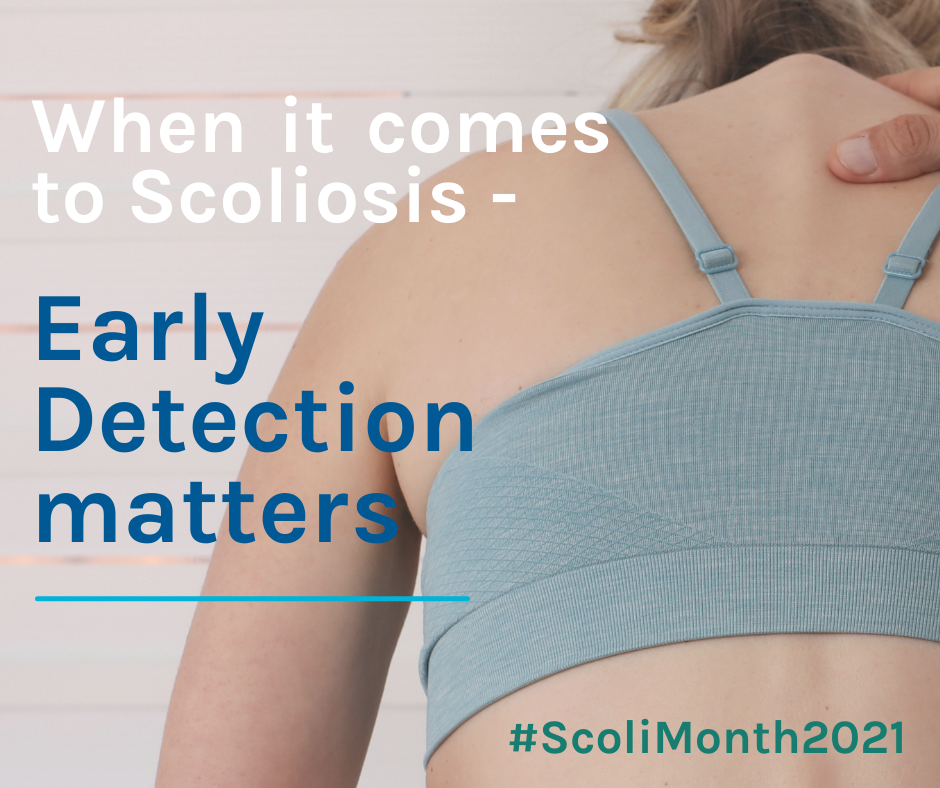
Treating adult degenerative scoliosis, also called “denovo scoliosis”, happens everyday in our practice. This type of scoliosis occurs later in life. It’s when the spine curves over time with arthritis. It’s actually more common than than adolescent idiopathic scoliosis (AIS) which affects young kids and teenagers. With denovo, a person may live most of their life without scoliosis, then start to develop it as their aging accelerates. When most people think of scoliosis, they think of teenagers with “crooked spines” wearing braces to correct it. We don’t think of the aging adult with progressing deformities. Adult scoliosis affects quality of life profoundly, and thankfully there are ways to help!
How does adult scoliosis occur?
This type of scoliosis occurs because of what’s called spinal degeneration. Parts of the spine develop arthritis, which breaks down important structural parts of the spine and leads to unequal loading of the column. This asymmetric (one-sided) loading, coupled with degeneration, creates instability in the spine, leading to the column collapsing like a building with an uneven foundation. Gravity adds pressure to this process, especially if the person is less active with weaker musculature to support their body upright. More technically, degenerative bone spurring forms at particular points in the spine in an effort to add more support, but the spurs can cause things like narrowing of the spinal canal or stenosis.
If the spine becomes very unstable, the individual vertebra (the bones that stack up to form the spinal column) can slip off each other from side to side (or front to back).
Does adult scoliosis hurt?
It can cause back pain, leg pain, neck pain, rib pain and shoulder pain. It can also vastly affect quality of life like the ability to walk, sit or lie down.
Sagittal alignment in adults with degenerative scoliosis
Think of the spine as straight up and down when you look at a person from the front. If it curves from side to side , like a “S” or a “C”, that is a scoliosis. But when you look at someone from the side, also called their ‘sagittal alignment’, the spine is not straight up and down like it is from the front. It actually has three vitally important curves! There is a C shaped curve in the neck, one in the mid back and one in the low back. These curves are super important, there is MUCH emerging research to show that the closer these curves are to their ideal measurement, the better health outcomes.
If a person has a loss of curves (such as the C shaped curve in their low back), there is a direct relationship to increased risk for back pain, slipped discs, or stenosis to name a few. But it also puts the person at risk for developing scoliosis later in life, due to profound weakness in the spinal column. The result is that ‘hunched over’ look you see in elderly people as they navigate and shuffle through their world. They may be holding onto a walker, and really struggling to maintain an upright posture at all.
Early diagnosis is key
There is often more of a fuss on scoliosis that exists in children and adolescents, but we can’t forget this adult population with scoliosis. Perhaps you will see early signs in a patient in your clinic who presents with back pain. Have they got reduced lumbar lordosis? What is their overall sagittal balance like?
Full length standing posterior anterior and lateral radiographs of the spine are required to accurately evaluate the spinal structural changes. In this way you can assess:
- coronal balance
- sagittal balance
- hip and pelvic parameters
- structural changes, such as the appearance of osteophytes
Nonoperative treatment can be considered for adult patients with denovo scoliosis in the absence of significant stenotic and/or radicular symptoms.
Surgery, bracing, or scoliosis specific exercises for adults?
While bracing in adults is an area requiring further research, there is some evidence to suggest it does play a role in management of adults with scoliosis. There is evidence by Palazzo et al (2016) showing that bracing may be effective in slowing down the rate of progression in adult scoliosis (15). This gives patients some hope that it indeed may be worth trying bracing as an option before considering surgery.
The other good news is that scoliosis specific exercises have been shown to be superior to natural history in adults who have scoliosis. The authors of this study suggest that scoliosis specific exercises should be considered as the ‘first line treatment’ especially in patients refusing scoliosis surgery.
In our clinical experience not all adults want surgery, even if it has been recommended to them by a surgeon. Looking at the research gives us hope and reason to give patients options before surgery. Scoliosis specific exercises, sometimes coupled with bracing where required, are potential viable treatment options to try for many patients.
